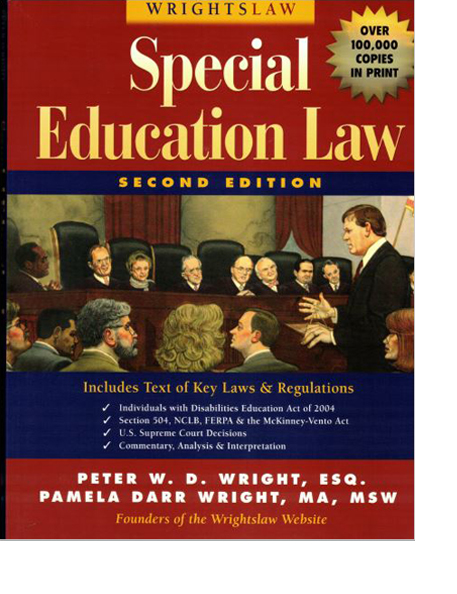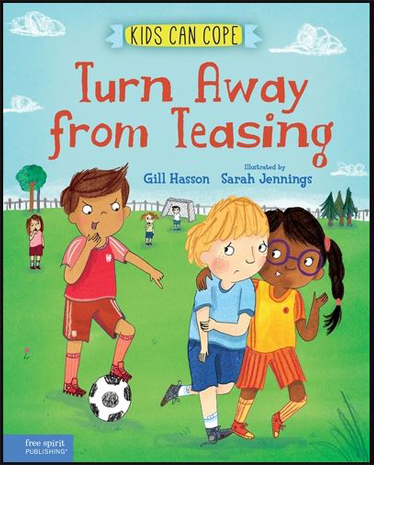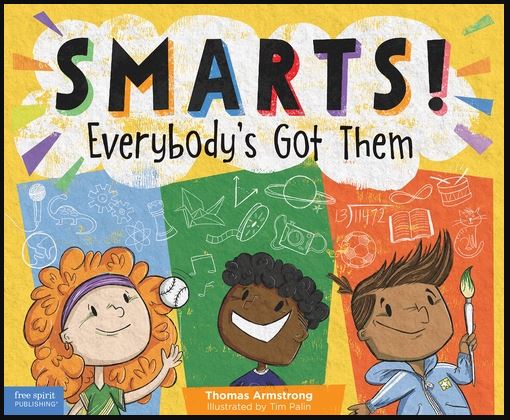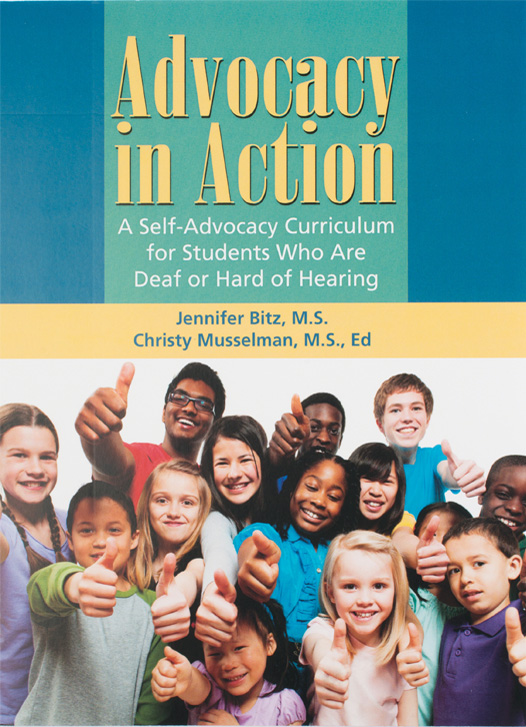Related Products
For Parents
Related Teacher Tools Takeout Items
Access via the Americans with Disabilities Act
Americans with Disabilities Act – Clarification for Schools
Schools are required to ensure equal communication access.
 Communication access is a key component of 504, IDEA and Title II of the ADA. A November 2014 policy guidance from the US Department of Education and US Department of Justice clarified that, under Title II of the ADA, schools are required to ensure that communication for students who are deaf and hard of hearing “are as effective as communication for others” [ADA Title II 28 C.F.R. 35.160 (a)(1)] through the provision of appropriate aids and services “affording an equal opportunity to obtain the same result, to gain the same benefit, or to reach the same level of achievement as that provided to others” [ADA Title II 28 C.F.R. 35.130 (b)(1)(iii)] and “to participate in and enjoy the benefits of the district’s services, programs, and activities” (DOJ-DOE p14). These requirements apply to all school-related communications for children ages 3 through high school in public schools, including charter and magnet schools.
Communication access is a key component of 504, IDEA and Title II of the ADA. A November 2014 policy guidance from the US Department of Education and US Department of Justice clarified that, under Title II of the ADA, schools are required to ensure that communication for students who are deaf and hard of hearing “are as effective as communication for others” [ADA Title II 28 C.F.R. 35.160 (a)(1)] through the provision of appropriate aids and services “affording an equal opportunity to obtain the same result, to gain the same benefit, or to reach the same level of achievement as that provided to others” [ADA Title II 28 C.F.R. 35.130 (b)(1)(iii)] and “to participate in and enjoy the benefits of the district’s services, programs, and activities” (DOJ-DOE p14). These requirements apply to all school-related communications for children ages 3 through high school in public schools, including charter and magnet schools.
In other words, they are responsible for ensuring that communication access is as effective for children with hearing loss as it is for their typically hearing peers. In some instances, in order to comply with Title II, a school may have to provide the student with auxiliary aids or services that are not required under the IDEA. In other instances, the communication services provided under the IDEA will meet the requirements of both laws for an individual student. These laws apply to children in public preschools as well. As a result of this guidance, parents have a much stronger voice in their requests for technologies for communication access.There is still an “out” for schools if they can prove undue financial hardship to a requested accommodation if they can provide the same access via a less expensive one.
 Requirements for schools are the same as Section 504
Requirements for schools are the same as Section 504- ADA Accessibility Guidelines serve as the basis for standards issues by the Departments of Justice and Transportation to enforce the law.
- Schools must comply with ADA requirements by providing appropriate accommodations and accessibility for all individuals with disabilities
- Schools may implement separate or additional procedures to assess effective communication in addition to those provided under IDEA.
- Schools must provide auxiliary aids or services in a timely manner which may be prior to the completion of the IDEA evaluation process and eligibility determination.
- Access needs can include: FM system, note taker, interpreter, captioning, teacher repeating/summarizing comments of other students, periodic progress monitoring by DHH professional (personal devices such as hearing aids and cochlear implants are exempt)
- Schools must honor the individual’s choice unless the school can prove that an alternative auxiliary aid or service provides communication that is as effective as that provided to students without disabilities and affords an equal opportunity to participate in and benefit from the service, program, or activity.
Court Case based on issues RE: equal access under the Americans with Disabilities Act
Million Dollar Settlement Highlights Need to Accommodate Students with Hearing Loss
MATERIALS TO SHARE WITH THE SCHOOL ADA COORDINATOR OR TEAM
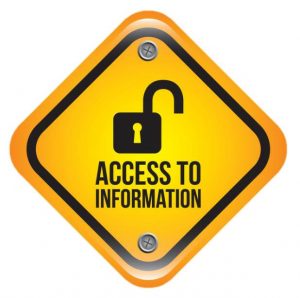 DOJ Website as an additional source for: Public entities must not discriminate against, deny the benefits of, or exclude qualified individuals with disabilities from participation in any service, program, or activity. The aids, benefits, and services provided to persons with disabilities must be equal to those provided to others, and must be as effective in affording equal opportunity to obtain the same results, to gain the same benefit, or reach the same level of achievement as those provided to others. Look under: PUBLIC ENTITY RESPONSIBILITIES UNDER TITLE II – SERVICES, PROGRAMS AND ACTIVITIES
DOJ Website as an additional source for: Public entities must not discriminate against, deny the benefits of, or exclude qualified individuals with disabilities from participation in any service, program, or activity. The aids, benefits, and services provided to persons with disabilities must be equal to those provided to others, and must be as effective in affording equal opportunity to obtain the same results, to gain the same benefit, or reach the same level of achievement as those provided to others. Look under: PUBLIC ENTITY RESPONSIBILITIES UNDER TITLE II – SERVICES, PROGRAMS AND ACTIVITIES
- Important ADA Policy Guidance on Effective Communication by Cheryl DeConde Johnson, Ed.D. From December 2014 Educational Audiology Review, Educational Audiology Association (included with permission). A summary of the issues and implications of the Title II ADA policy clarification suitable for sharing with school administrators.
- Background information for administrators, ADA coordinators, other school staff: The Cascading Impact of Hearing Loss This handout was written with the realization that schools becoming more evidence-based and requiring data or research to back up decision-making. Basic information backed up with some research findings are presented that puts the concept of access into perspective for school situations. One sign that a student is working harder to access communication than his/her peers is the level of fatigue or tiredness. For specific information on tiredness in children with hearing loss go here.
- Accessibility Considerations worksheet (ADA) for Students with Hearing Loss – for use in identifying access issues with school teams and a planning sheet for obtaining assessment information
- Accessibility Considerations for Students with Hearing Loss What Auxiliary Aids and Services are Needed to Ensure Effective Communication? List of auxiliary aids and services with examples
- Article: Access is the Issue Not Hearing Loss: New Policy Clarification Requires Schools to Ensure Effective Communication Access by Karen Anderson from ASHA Perspectives on Hearing and Hearing Disorders in Childhood, Volume 25, pg 24-36. Published April 2015.
WHITE PAPER: Estimating the Level of Communication Effectiveness / Access. The 2014 ADA policy clarification made it clear that schools must ensure that students with hearing loss are communicating (accessing and interacting) as effectively as their class peers. To abide by this requirement, we need to know a student’s level of access. The ADA policy clarification FAQ example of a student with hearing loss illustrated that academic grades are not a means of determining communication access. What do YOU do to know just how much verbal language your hard of hearing students perceive? What about your deaf students and the completeness of their understanding secondary to what they receive from an interpreter? Finally, what about the student with hearing loss who has speech production issues that interferes with participation – are they communicating as effectively as their peers? The link above is to this White Paper.
Questions and Answers
This information was taken from Frequently Asked Questions on Effective Communication for Students with Hearing, Vision, or Speech Disabilities in Public Elementary and Secondary Schools For complete information refer to the actual document.
Title II of the Americans with Disabilities Act (Title II)
1. Under Title II, what must public school districts do to provide effective communication to
students with hearing, vision, or speech disabilities?
Answer. Title II and its implementing regulations require public school districts to ensure that communication with students with hearing, vision, or speech disabilities is as effective as communication with students without disabilities. To do this, public schools must provide appropriate “auxiliary aids and services” where necessary to provide effective communication; that is, schools must provide appropriate auxiliary aids and services so that students with disabilities have an equal opportunity to participate in, and enjoy the benefits of, the services, programs, and activities of the public school district. Title II requires covered entities, including public schools, to give “primary consideration” to the auxiliary aid or service requested by the student with the disability when determining what is appropriate for that student.
2. What are examples of auxiliary aids and services for students with hearing, vision, and speech
disabilities?
Answer. In general, auxiliary aids and services make aurally or visually delivered information available to students with hearing, vision, or speech disabilities so that they can receive information from, and convey information to, others as effectively as students without disabilities. Auxiliary aids and services include a wide range of services, devices, technologies, and methods for providing effective communication, as well as the acquisition or modification of equipment or devices.
The Title II regulation lists examples of some, but not all, of these kinds of auxiliary aids and services.
For a person who is deaf, deaf‐blind, or hard of hearing, some examples of auxiliary aids and services are interpreters, note takers, exchange of written materials, real‐time computer‐aided transcription services (e.g., CART), assistive listening systems, accessible electronic and information technology, and open and closed captioning.
Interpreters must be qualified. This means that the interpreter must be able to interpret both receptively (having the skill needed to understand what the person with a disability is saying) and expressively (having the skill needed to convey information to the person with a disability). For example, an interpreter must be able to sign to the person who is deaf what is being said by the hearing person, and voice to the hearing person what is being signed by the person who is deaf. This communication must be conveyed effectively, accurately, and impartially, using any appropriate specialized vocabulary. Thus, a teacher or other staff member who signs “pretty well” is not a qualified interpreter. Being able to sign “pretty well” does not mean that a person can process spoken communication into proper signs; nor does it mean that he or she has the proper skills to observe the person signing and change the signed or finger‐spelled communication into spoken words.
For a person who is blind, deaf‐blind, or has low vision, some examples of auxiliary aids and services are qualified readers, taped texts, audio recordings, Braille materials and displays, screen reader software, magnification software, optical readers, secondary auditory programs (SAP); large print materials; and accessible electronic and information technology. For a person with a speech disability, some examples of auxiliary aids or services are a word or letter board, writing materials, spelling to communicate, a qualified sign language interpreter, taped texts, a computer, a portable device that writes and/or produces speech, and telecommunications services.
In general, the services, devices, technologies and methods for providing effective communication that are “auxiliary aids and services” under Title II could also be provided under the IDEA as part of FAPE.
3. What does it mean for a public school district to give “primary consideration” to the request of the student with a disability when making the decision to provide a particular auxiliary aid or service?
Answer. The Title II regulations require that when a public school is deciding what types of auxiliary aids and services are necessary to ensure effective communication, it must give “primary consideration” to the particular auxiliary aid or service requested by the person with the disability. When determining what is appropriate for that student, the school must provide an opportunity for the person with the disability (or an appropriate family member, such as a parent or guardian) to request the aid or service the student with a disability thinks is needed to provide effective communication.
It is the person with the disability (or his or her appropriate family member) who is most familiar with his or her disability and can provide relevant information about which aids or services will be most effective. For example, if a high school student was deaf at birth or lost his or her hearing before learning language, that person may use American Sign Language (ASL) as his or her primary form of communication and may be uncomfortable or not proficient with other forms of communication. A high school student who lost his or her hearing later in life and who uses a cochlear implant may not be as familiar with sign language and may feel most comfortable and proficient with an oral interpreter or with the use of a computer or other technology. A young student who is nonverbal and is fluent in ASL but cannot read yet may not be able to use a computer with written text and may be most comfortable and proficient communicating with a sign language interpreter.
The public school must honor the choice of the student with the disability (or appropriate family member) unless the public school can prove that an alternative auxiliary aid or service provides communication that is as effective as that provided to students without disabilities. If the school district can show that the alternative auxiliary aid or service is as effective and affords the person with a disability an equal opportunity to participate in and benefit from the service, program, or activity, then the district may provide the alternative.
4. What factors should a public school district consider in determining what auxiliary aids or services are necessary to afford qualified students with disabilities an equal opportunity to participate in, and enjoy the benefits of, the public school’s services, programs, or activities?
Answer. The determination of what auxiliary aids or services will provide effective communication must be made on a case‐by‐case basis, considering the communication used by the student, the nature, length, and complexity of the communication involved, and the context in which the communication is taking place.
When determining the appropriate method of communication, schools must make an individualized determination and cannot assume, for example, that simply because a student is deaf, the student is fluent in ASL. In addition to giving primary consideration to the particular auxiliary aid or service requested by the student with a disability, the public school should also consider, for example, the number of people involved in the communication, the expected or actual length of time of the interaction(s), and the content and context of the communication. For example, will the communication with a deaf student be fairly simple so that handwritten or typed notes would suffice; or is the information being exchanged important, somewhat complex, technical, extensive, or emotionally charged, in which case, a qualified interpreter may be necessary.
The Title II regulations’ requirements apply to all of a student’s school‐related communications, not just those with teachers or school personnel. Therefore, given the ongoing exchanges students experience with teachers, students, coaches, and school officials, any student who requires a sign language interpreter in order to receive effective communication in an academic class would likely need interpreter services throughout the day and may also need them to participate in school‐sponsored extracurricular activities.
For a deaf or hard of hearing student, a sign language interpreter or CART may be appropriate where student comments and discussions are part of the class experience for all students, i.e., to enable the student to understand comments and discussions from classmates that all students are exposed to, in addition to what is being said by the teacher, and to enable the student to express himself or herself in a manner that permits the teacher and classmates to fully understand and respond to the student.
We strongly encourage schools to reassess the effectiveness of communication regularly as a situation changes. For example, what may begin as a simple request by a student to check out a book from the school library, where an exchange of written notes would be sufficient, can evolve into a more complex communication concerning assistance in completing a research paper, where an exchange of written notes might not be sufficient to ensure effective communication.
5. What does it mean for auxiliary aids and services to be provided in “accessible formats, in a timely manner, and in such a way as to protect the privacy and independence” of a student with a disability?
Answer. The Title II regulations require that when a public school is providing auxiliary aids and services that are necessary to ensure effective communication, they must be provided in “accessible formats, in a timely manner, and in such a way as to protect the privacy and independence” of a student with a disability.30 This regulatory provision has several requirements.
First, the auxiliary aid or service provided must permit the person with the disability to access the information. For example, if a blind student is not able to read Braille, then provision of written material in Braille would not be accessible for that student. If homework assignments are available on‐line, then the on‐line program used by the school must be accessible to students who are blind. Similarly, for a student with limited speech who does not yet read, a computer that writes words would not be accessible for that student. Instead, a device that uses pictures to communicate words, thoughts, and
questions may be appropriate.
Second, the auxiliary aid or service must be provided in a timely manner. That means that once the student has indicated a need for an auxiliary aid or service or requested a particular auxiliary aid or service, the public school district must provide it (or the alternative, as discussed above) as soon as possible. If the student is waiting for the auxiliary aid or service (as opposed to requesting and arranging for it in advance), DOJ and ED strongly advise that the public school keep that student (and parent) informed of when the auxiliary aid or service will be provided. This requirement is separate from the provision
of special education and related services under the IDEA. For example, where the student or his or her parent(s) requests auxiliary aids and services for the student under Title II, the appropriate aids and services must be provided as soon as possible, even if the IDEA’s evaluation and IEP processes are still pending.
Third, the auxiliary aid or service must be provided in a way that protects the privacy and independence of the student with the disability. For example, for someone who is deaf and uses ASL, if other people in the environment understand ASL, then conversations that involve sensitive information must be conducted privately. Additionally, auxiliary aids and services must be provided in a manner that does not unnecessarily disclose the nature and extent of an individual’s disability. For example, if a student who is hard of hearing needs assistance with taking notes, a teacher should not call out for volunteers in the front of the whole class. Auxiliary aids and services also must be provided in a way that protects the independence of the student. For example, if a blind student requested an accessible electronic book (e‐book) reader to complete in‐class reading, instead of using a reading aide, the school district should provide the e‐book reader because it would allow the student to go through the material independently, at his own pace, and with the ability to revisit passages as needed.
6. What happens if the public school district thinks that providing a particular auxiliary aid or service would result in a fundamental alteration in the nature of a service, program, or activity, or an undue financial and administrative burden?
Answer. A school district must provide a particular auxiliary aid or service that is otherwise required unless the district can prove that such an auxiliary aid or service would result in a fundamental alteration in the nature of the service, program, or activity or in undue financial and administrative burdens.The head of the school district or his or her designee (i.e., another school official with authority to make budgetary and spending decisions) must make the determination that a particular auxiliary aid or service would result in a fundamental alteration in the nature of the service, program, or activity or in undue financial and administrative burdens after considering all resources available for use by the school district in the funding and operation of the service, program, or activity. Such a determination must be accompanied by the decision maker’s written statement of the reasons for concluding that a requested auxiliary aid or service would cause such alteration or burdens. In those circumstances, the school district has the burden of proving that providing the requested auxiliary aid or service would result in such alteration or burdens. Compliance with the effective communication requirement would, in most cases, not result in undue financial and administrative burdens. While there is nothing in the ADA that would prevent the head of the school district from delegating this authority to an appropriate member of the child’s IEP team, that designee must have authority to make budgetary and spending decisions and must have the knowledge necessary to consider all resources available to the school district for use in the funding and operation of the service, program, or activity.
In situations where the school district decides not to provide a particular aid or service and can prove that doing so would result in a fundamental alteration or undue burdens, the district must take other steps that would not result in such an alteration or such burdens but would nevertheless ensure that, to the maximum extent possible, the individual with a hearing, vision, or speech disability can participate in, and receive the benefits or services provided by, the school district’s program or activity. Generally, this would involve the provision of an auxiliary aid or service that would not result in a fundamental alteration or undue burden.
7. Under what circumstances is a public school required to provide auxiliary aids and services to persons with a hearing, vision, or speech disability who are not students, such as parents, other relatives, and members of the public, who seek to participate in or benefit from a district’s services, programs, or activities?
Answer. Title II’s effective communication obligations are not limited just to students — schools are obligated to provide effective communication to all individuals who seek to participate in or benefit from a school district’s services, programs, or activities such as student registration, parent‐teacher conferences, meetings, ceremonies, performances, open houses,
and field trips. All of the same Title II requirements and considerations discussed in the context of students with hearing, vision, or speech disabilities apply to other individuals with disabilities who are covered by this requirement.
8. May a public school require an individual with a hearing, vision, or speech disability to bring another person to interpret or facilitate communication, or to rely on a person who accompanies an individual with such a disability?
Answer. The Title II regulations expressly prohibit a public school from requiring an individual with a disability to bring another person to interpret for him or her. Assuming the provision of an interpreter or other auxiliary aid or service is required, a school is prohibited from relying upon a person who accompanies a child or adult with a hearing, vision, or speech disability to interpret or facilitate communication except in two distinct circumstances. First, in an emergency involving an imminent threat to the safety or welfare of an individual or the public where there is no interpreter available, the school may ask either a minor child or an adult to interpret or facilitate communication. In no other circumstances may a school rely on a minor child to interpret or facilitate communication. Second, where the individual with the hearing, vision, or speech disability specifically makes the request, an accompanying adult may interpret or facilitate communication if the accompanying adult voluntarily agrees to provide the assistance and the school’s reliance on the accompanying adult is appropriate under the circumstances.
9. Can public schools charge for the provision of auxiliary aids or services?
Answer. No. Public schools cannot charge for the auxiliary aids or services that they provide to meet the effective communications provision in the Title II regulations. DOJ and ED strongly advise school districts that they inform students with disabilities and their parents that the district can and will provide auxiliary aids and services, and that there will be no cost for such aids or services.
Interplay Between Title II and the IDEA
10. How do the IDEA FAPE and the Title II effective communication requirements differ with regard to the obligation to provide communication for students with disabilities attending public elementary and secondary schools?
Answer. The Title II regulations explicitly require that a district take appropriate steps to ensure that communications with persons with disabilities are “as effective as” communications with other persons. They further require that a district provide appropriate auxiliary aids and services where necessary to afford a person with a disability an “equal opportunity” to participate in and enjoy the benefits of the district’s services, programs, or activities. Under the IDEA, FAPE must be individually designed to provide meaningful educational benefit to the child. The IDEA does not require that a district compare the effectiveness of communications with a student with a disability to the effectiveness of communications with students without disabilities, although there is nothing in the IDEA that precludes districts from doing so as part of FAPE.
For a student with a disability who is covered under both laws ‐‐ such as all IDEA‐eligible students with hearing, vision, or speech disabilities ‐‐ the school district must ensure that both sets of legal obligations are met, and that none of the student’s rights under either law are diminished or ignored. For many students, the special education and related services that they receive under the IDEA will also ensure that communication with those students is as effective as communication with other persons.
In other instances, the services, devices, technologies and methods for providing effective communication that are provided to a particular student as “auxiliary aids and services” under Title II may not necessarily be the same as those determined under the IDEA. Further, if the special education and related services provided under the IDEA are not sufficient to ensure that communication with the student is as effective as communication with other persons, the Title II obligations have not been met. Thus, depending on the circumstances, the services and aids that a student receives under the IDEA may be the same as or greater than the services and aids that would be provided under Title II; in other circumstances, a student may receive more services and aids under Title II than those provided under the IDEA.
A student with a disability does not, and cannot be asked to, give up his or her rights under Title II in exchange for, or because he or she already receives, special education and related services under the IDEA. That is, the provision of FAPE under the IDEA does not limit a student’s right to effective communication under Title II.
11. Must a student be eligible under the IDEA in order to be provided auxiliary aids and services needed to ensure effective communication under Title II? (In other words, must a student with a disability have an IEP to access effective auxiliary aids and services?)
Answer. No. Title II does not require IDEA eligibility. While many students who have communication needs based on a hearing, vision, or speech disability are eligible under the IDEA and have IEPs, these are not prerequisites for receiving auxiliary aids and services needed to ensure effective communication under Title II.
Implementation
12. How does a parent request auxiliary aids and services for a child under Title II? Can the request be made as part of the IEP process or must it be made through a separate process?
Answer. Title II does not designate a particular responsible person for a parent or student to contact about, or a specific process for individuals to follow, with regard to obtaining services under Title II. The school district can determine whom the parent should contact with requests for auxiliary aids and services and other ADA issues.
Title II requires school districts to provide notice about Title II and its applicability to the school districts’ services, programs, or activities. The school district or public school should make sure that the identity and contact information of the designated school official is made publicly available in accessible formats. A best practice is for a district to proactively notify parents and students about the right to effective communication under Title II and identify the designated school official who accepts requests for Title II auxiliary aids and services.
In order to carry out a school district’s responsibility to ensure effective communication, district staff, such as teachers and administrative staff, who might reasonably be contacted by parents or students with requests for auxiliary aids or services, need to be knowledgeable about how to handle this type of request. For example, the district’s process might ensure that staff refers parents to the designated school official. As another example, the district’s process might call for the teacher or other staff member to communicate the parent’s request directly to the designated school official and to notify the parent that the request has been so communicated. In addition, a school district’s Section 504 or ADA Coordinator (discussed in further detail below) could be the designated school official or facilitate the process.
If a child has an IEP, neither the IDEA nor Title II require that the child’s IEP Team address a parent’s Title II request for his or her child; however, a school district may choose to delegate this responsibility to the child’s IEP Team. Please refer to Q&A 15 for additional information regarding the role of the IEP Team. As discussed below, a parent does not need to make a specific request under Title II before a school considers its responsibilities to provide auxiliary aids and services.
13. For children who are already receiving special education and related services under the IDEA, do parents have to make specific requests for different or additional auxiliary aids and services to trigger the Title II obligations for effective communication? Also, once the decision is made to provide a particular auxiliary aid or service to a student with a hearing, vision, or speech disability, does the school district have any obligation under either Title II or the IDEA to revisit that decision? If so, when?
Answer. Parents do not have to make a specific request for different or additional auxiliary aids. When the school district knows that a student needs assistance with communication because, for example, he or she has a hearing, vision, or speech disability, the school district also has an affirmative obligation to provide effective communication under Title II, whether or
not a parent requests specific auxiliary aids and services under Title II. This obligation is in addition to the requirement that the school district make FAPE available if the student is eligible under the IDEA.
As a best practice, schools should consult with the parent or guardian (and students, as appropriate) at the first opportunity regarding what auxiliary aids or services are appropriate and update information about these preferences at least every year or whenever the parent or guardian requests a change. Nothing prevents the parent, guardian, or student from specifically requesting a particular auxiliary aid or service if not so consulted. Also, under the IDEA, each school district must ensure that the IEP Team reviews and, if appropriate, revises the child’s IEP periodically, but not less than annually. In general, a reevaluation under the IDEA must occur at least once every three years. Under Title II, the public school has a continuing obligation to assess the auxiliary aids and services it is providing to students with hearing, vision, or speech disabilities to ensure that these students are receiving effective communication. For information on what parents can do if they disagree with a school district’s decision on what Title II’s effective communication provisions require for their child, please refer to Q&A 18.
14. Who in a school district participates in the determinations about the provision of auxiliary aids and services under Title II? Does the ultimate decision maker differ depending upon whether the student is covered by the IDEA, Title II, or both?
Answer. The Title II regulations do not designate a particular responsible person or group of people to make the determinations about the provision of auxiliary aids and services under Title II. The Title II regulations do require that most school districts (those that employ 50 or more persons) select at least one employee to coordinate implementation and compliance with the district’s responsibilities under Title II. Such an employee is generally referred to as the ADA
Coordinator. A school district may give the ADA Coordinator the responsibility of making decisions about the auxiliary aids and services required under Title II, and may choose to have the ADA Coordinator participate in Title II effective communication decisions and in IEP reviews.
The Title II regulations also address who should make determinations concerning whether a particular auxiliary aid or service would create a fundamental alteration or undue burden.Please refer to Q&A 6 for additional information.
If a student is IDEA‐eligible, a school district can also decide that a parent’s request under Title II for a child will be addressed by the IEP team. See Q&A 15.
15. Under what circumstances may the IEP Team make decisions about the provision of auxiliary aids and services required under Title II?
Answer. Under the IDEA, the school must ensure that the child’s educational program, as part of FAPE, is based on the individual needs of the child and is reasonably calculated to enable the child to receive meaningful educational benefit. If a school district designates the IEP Team as having the responsibility of making decisions about the auxiliary aids and services required under Title II, then the IEP Team may make this decision. However, the IEP Team needs to be aware that the decision regarding the auxiliary aids and services needed to ensure effective communication as required under Title II poses a different question than the FAPE determination under the IDEA and must be made using the Title II legal standards. For additional information on the Title II requirements, please refer to Q&A’s 1 through 9.
16. Is the IDEA evaluation process different than the analysis used when considering an individual’s request for a particular auxiliary aid or service under Title II?
Answer. Under the IDEA, each school district must conduct a full and individual initial evaluation before the initial provision of special education and related services to a child with a disability. The evaluation must use a variety of assessment tools and strategies to gather relevant functional, developmental, and academic information about the child, including
information provided by the parent that may assist in determining whether the child is a child with a disability and needs special education and related services. Evaluations also must be provided and administered in a student’s native language or other mode of communication. If a school district has already completed a child’s evaluation under the IDEA, it may rely on
information obtained from that evaluation when determining the need for effective communication under Title II. However, the school district must analyze the child’s needs and how to meet those needs based on the Title II standard, and this includes giving primary consideration to a request for a specific auxiliary aid or service.
A school district may not ignore information obtained through the IDEA evaluation procedures, but may implement its own procedures to determine whether a child needs a particular auxiliary aid or service to ensure effective communication under Title II. Similarly, as explained above in Q&A 5, a school district must provide the auxiliary aids or services in a timely manner and cannot wait for the IEP process to run its course before providing necessary auxiliary aids and services under Title II.
The IDEA does not prohibit a school district from providing the needed auxiliary aids and services under Title II while the IDEA evaluation is pending. In this situation, the school district must first address the child’s needs for auxiliary aids and services based on the Title II standard while proceeding with the IDEA evaluation process, meaning the school district must provide those aids and services that ensure communication with the child is as effective as communication with students without disabilities and give primary consideration to the parent’s or child’s request for specific auxiliary aids and services, if any. Once the IDEA evaluation is complete, the school district may need to reassess whether the child needs different auxiliary aids or services to ensure effective communication under Title II if the results of the IDEA evaluation provide additional information regarding the child’s needs or the effectiveness of the auxiliary aids and services being used.
17. May a school district determine that, under Title II, all children with a hearing, vision, or speech disability will receive the same auxiliary aid or service as others with that kind of disability?
Answer. No. As stated earlier, when a school district decides what auxiliary aids or services to provide, that decision is made on an individualized, case‐by‐case basis. Because students with disabilities experience varying levels and types of limitations from hearing, vision, or speech disabilities, and because school districts must give primary consideration to the requests of the individual, these determinations must be made on an individual basis. For examples of appropriate auxiliary aids and services in individual cases, see Q&A 4.
18. What dispute resolution mechanisms are available if a parent believes that a school district has improperly denied or limited his or her child’s access to a particular auxiliary aid or service under Title II or has not made FAPE available under the IDEA?
Answer. Under the IDEA, a parent challenging the provision of FAPE may request mediation, may file a complaint with the State educational agency, or may request an impartial administrative hearing by filing a due process complaint and participating in the prescribed resolution process. The administrative hearing procedures vary by state and may include one or two levels of administrative review. An administrative hearing decision may be appealed to a State or Federal court empowered to hear such cases. In general, IDEA’s administrative hearing procedures must be utilized before seeking relief in State or Federal court. More information about IDEA’s dispute resolution procedures is available at http://www2.ed.gov/policy/speced/guid/idea/memosdcltrs/acccombinedosersdisputeresolutio
nqafinalmemo‐7‐23‐13.pdf
Regardless of whether or not the student also is eligible under the IDEA, a parent of a student with a disability can file a Title II complaint regarding the denial or limitation of a particular auxiliary aid or service with the United States Department of Education’s Office for Civil Rights or with the United States Department of Justice’s Civil Rights Division, or file a Title II grievance with the school district if the school district has such a procedure. A parent may also choose to file a civil action alleging a violation of Title II in Federal court.
However, parents and guardians should be aware that the IDEA requires that, before filing a Federal case under other laws, such as Title II of the ADA, seeking a remedy that is also available under the IDEA, the parent or guardian generally must exhaust the administrative hearing procedures of the IDEA, which means obtaining a final decision under the IDEA’s
impartial due process hearing procedures.
Funding
19. Under what circumstances may a school district use IDEA funds to pay for auxiliary aids or services for IDEA‐eligible students to ensure effective communication as required by Title II?
Answer. The IDEA provides that grant funds must be used only in accordance with the applicable provisions of the IDEA and to pay the excess costs of providing special education and related services to children with disabilities. Therefore, IDEA funds may be used only to pay for auxiliary aids and services under Title II that also are required to be provided under the IDEA, such as assistive technology or interpreter services that are included in the student’s IEP. If a child receives auxiliary aids and services under Title II that are not included in the child’s IEP, IDEA funds may not be used to pay for those services.
Resources
20. Where can a school district or parent get more information about these issues?
Answer. For information about Section 504 or Title II, school districts and parents can contact the OCR office for the state in which the school is located. Contact information for the OCR office that serves each state is available at
http://wdcrobcolp01.ed.gov/CFAPPS/OCR/contactus.cfm.
Districts and parents can also call OCR’s customer service line at 800‐421‐3481 (voice) or 800‐877‐8339 (TDD) to obtain this contact information.
In addition, for information about Title II requirements for effective communication, school districts and parents can call DOJ’s toll‐free ADA Information Line, 800‐514‐0301 (voice) or 800‐514‐0383 (TTY), or consult DOJ’s ADA website, http://www.ada.gov.
For information about the IDEA requirements for children with disabilities and communication needs, school districts and parents can contact OSEP at (202) 245‐7459 or consult OSEP’s website at http://www2.ed.gov/about/offices/list/osers/osep/index.html.
In addition, a list of OSEP’s State contacts can be found at http://www2.ed.gov/policy/speced/guid/idea/monitor/state‐contact‐list.html

